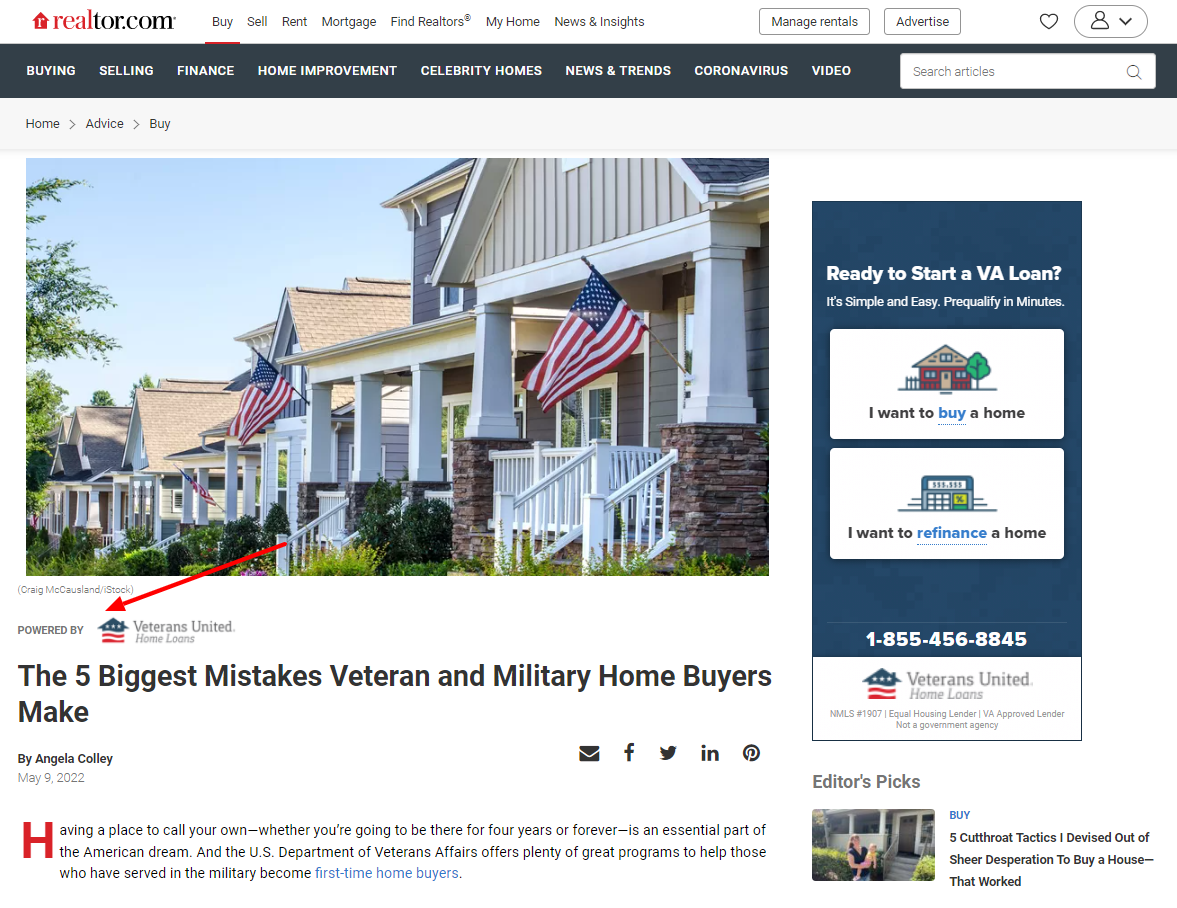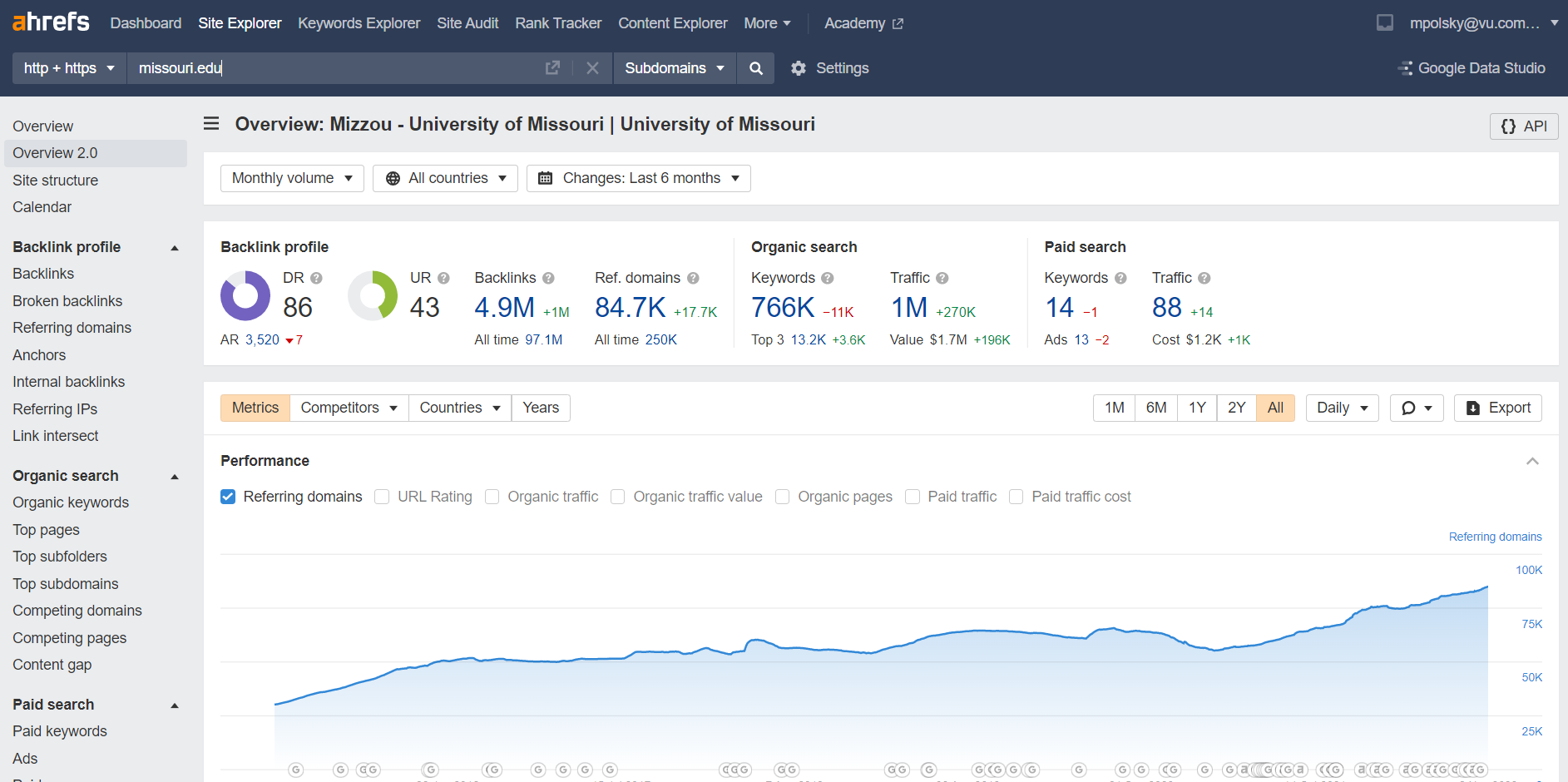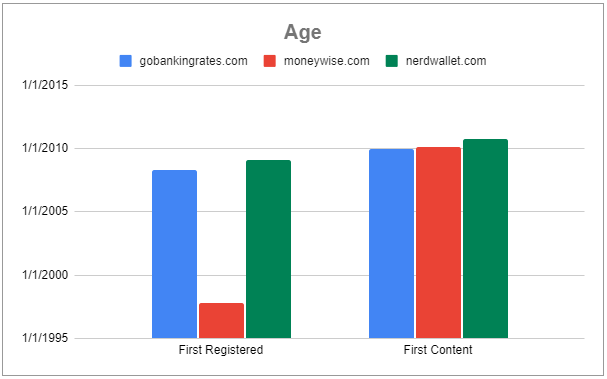Lesson 6.5: Link Auditing
Article by: Matt Polsky
Link auditing is the process of gathering and analyzing the links pointing to a website. Your analysis should provide actionable recommendations in an easy-to-digest format, even if the recommendation is to do nothing.
Why Perform a Link Audit?
As we learned in our links and SEO lesson, links can impact the algorithm in both a positive sense and a negative sense. Due to the impact of links on the algorithm, it’s a good idea to regularly audit your link profile – and the link profiles of your competitors.
Performing regular link audits can help curb the threat of traffic loss from poor link practices and uncover opportunities to build or reclaim links. However, regular maintenance isn’t the only reason to perform a link audit.
Other reasons to perform a link audit may include, but aren’t limited to:
- Identifying the links that may be harmful to a link profile so you can attempt to remove or disavow them.
- Uncovering negative SEO threats (mass influx in velocity of bad links).
- Determining what links are driving ranking value to a competing page or website so you can reverse engineer them or build similar links to your site.
- Getting insight into what competitors are trying to target or if they are attempting to penetrate a market from the SEO side so that you can be more prepared.
- Considering the long-term stability of a site you are attempting to acquire so you don’t get burned by a link penalty later.
- Identifying links to pages that 404 or no longer exist so you can reclaim those links.
No matter your goal, link auditing typically comes down to two things: which links are good and which are bad.
While that sounds simple, it is often very complex. In SEO, links have gray areas that require familiarity with Google’s algorithms, stances and capabilities.
If you don’t feel entirely confident in your knowledge of link-based algorithms, now is a good time to return to the Links and SEO lesson for a refresher.
For example, a link from Realtor.com to VeteransUnited.com should be highly valuable. Realtor.com is highly authoritative from an SEO tool standpoint (DR 91, DA 89, etc.), authoritative from a traditional brand standpoint, is relevant to the niche, produces quality content, ranks well for terms and any link would likely seem editorial.
However, when you dig deeper, you’ll notice some downsides that may reduce the ability for links from Realtor.com to help Veterans United.
Realtor.com and Veterans United are partners, and Veterans United pays for sponsored content on Realtor.com. If the link was from a sponsored page (not editorially gained), pointed to an indexable page on VeteransUnited.com and used exact match anchor text, it may look manipulative to Google. The odds are that Google will ignore these links, but it could trigger filtering or a link penalty when done at scale.

Google advises using rel=sponsored or rel=nofollow for sponsored links. If this isn’t an option, you can point the links to a non-indexable page to prevent any issues.
Outside of sponsored content, Realtor.com links to Veterans United quite a bit. Think back to the law of diminishing returns, where the first link acquired is typically the most powerful, and all future links are less powerful. Beyond diminishing returns, Google understands that the easier it is for a site to get a link, the less valuable that link should be to prevent further manipulation.
If you're new to SEO, this may not have registered, which is why we covered so many algorithms in prior lessons.
What to Look for in a Link Audit
As seen in the previous example, what to look for in a link audit can be complex, and it's best to have a working knowledge of Google's stances on links. However, a basic understanding of "good" and "bad" links and the ability to uncover patterns can also help move a link audit forward with an expert set of eyes for review.
Patterns of negative link behavior may include:
- A disproportionate amount of links from a single domain.
- Site-wide links (a link that's on every page of a domain).
- A disproportionate amount of links from spammy CCTLDs (.cn, .pl, etc.).
- Excessive anchor text on a single term.
- Spam anchor text.
- Unnatural spikes in velocity of links.
- Unnatural amounts of forum, comments, or profile links.
- Links lacking context or from bad neighborhoods (gambling, porn, etc.)
- Links lacking relevance to the site or niche.
When determining patterns of positive link behavior, it's often easiest to dissect the top-linked and top-ranking pages. However, remember that big and authoritative brands can often rank well in a niche with minimal links.

How to Perform a Link Audit
The link audit process is relatively straightforward. You want to identify competitors to compare your profile against, pull link data from one or more sources, categorize the links and report your findings and recommended next steps.
We'll break the process down below with an example. Remember that the example is only one way to format a link audit and is not always necessary for every single audit you may perform.
Note: No matter how complex or brief your link audit is, provide reasoning for recommendations.
Step 1: Determine the Data Source
Available indexes for link audits include, but aren't limited to:
- Ahrefs
- Google Search Console (if you're a verified user)
- Majestic
- Semrush
- Moz
At current, my favorite index is Ahrefs, so our example will use data from this source. Majestic is decent data source but often logs an excessive number of links that don't exist.
Depending on the needs of the analysis, you may need to combine multiple datasets, remove duplicates and update those rows from a unified dataset. Link datasets can get large quickly and cause Google Sheets and Excel to time out. In instances with large datasets, it's best to use Power BI's desktop version and load the Excel file as a database.
Step 2: Identify Competitors
There isn't a universal good or bad link profile. Determining if a link profile is good or bad depends on the site and niche. Sites with an abysmal link profile in certain industries may have an exemplary one in others. Because of this, we typically want to include a handful of competitors to contrast metrics.
Competitors should be as direct as possible. For example, Veterans United's link profile will look considerably different from Bankrate or Nerdwallet's, reducing their effectiveness in this sort of comparison.
Note: Sites just outside the niche can be highly valuable in other comparisons, such as mining for link opportunities to reverse engineer a competitor's links.
Step 3: Compile the Overview
After you've identified competitors, compile an overview page where you can easily compare link metrics.
I typically compare the following:
Domain registration date
Domain age is an old-school ranking factor. I like to include domain age to help provide context around the number of links a site has. A fresh site with thousands of links likely raises red flags (or shows a competitor is getting after it).
First relevant content date
I use Archive.org to get an idea of when the site began producing content related to my niche. Domains expire, get dropped, sold, etc., so I want to know when they broke into a niche.
I typically show both domain age and first content in a chart like the following:

SEO Authority Metrics
SEO metrics may differ by company, so I typically pull every metric at my disposal. It's not always necessary but can show you any major discrepancies in each index. These metrics give you an idea of how your site stacks up against the competitors.
In previous lessons, we learned that most metrics have similar meanings. However, Majestic’s slightly differ, with Trust Flow measuring the quality of links and Citation Flow measuring the amount of equity passed from all links to a site.
When I include Majestic metrics, I like to look at the ratio of Trust Flow to Citation Flow. When the gap is large, it typically reflects a link profile loaded with low-quality links.
When it's all said and done, a link audit will look something like this:

A snapshot against competitors, plus tabs for:
- Summary data
- Best links
- Worst or worrisome links
- Top pages by links
- Breakdown of anchor text usage
Remember, every link audit doesn't need to be this thorough - it all depends on the goal of the analysis. For example, finding link opportunities from competitors may only require their top linked pages and a list of the referring domains linking to you.
